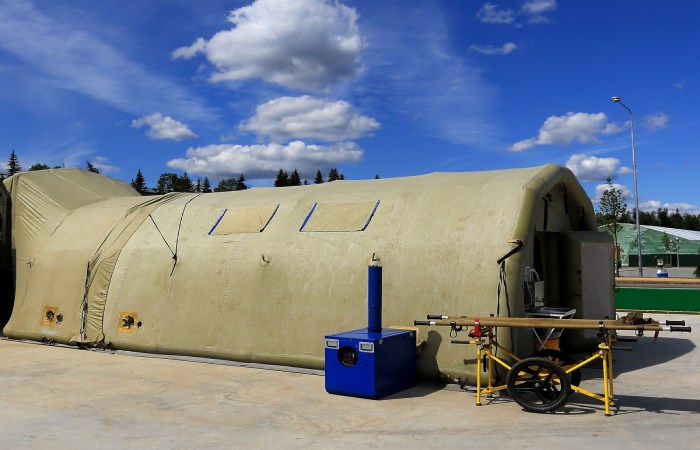Modular medical buildings are becoming a practical response to ongoing pressure on healthcare systems. They give providers a way to expand or relocate clinical capacity without years of traditional construction. Prefabricated units arrive ready for assembly, which helps organizations meet growing demand while keeping operations moving. These structures have shifted from temporary stopgaps into reliable tools for maintaining consistent patient care during renovations, emergencies, or population surges.
Rapid Expansion and Emergency Response
In disaster zones or during large-scale outbreaks, care often must start before permanent facilities can be repaired or built. A deployable field hospital represents one model of how modular methods can function under these circumstances. Its prefabricated components can be shipped, set up quickly, and adapted to provide treatment areas, diagnostics, and staff spaces. This approach demonstrates how flexible building techniques protect continuity of care in unstable conditions.
Design Considerations for Patient Care
When modular construction is used for healthcare buildings, the planning process focuses on safety, flow, and compliance. Designers coordinate corridors, waiting areas, and supply zones to reduce cross-traffic and improve infection control. Spaces are fitted to accommodate medical equipment, privacy needs, and support functions such as storage or utilities. Attention to these elements allows modular medical buildings to deliver consistent patient care comparable to traditional structures.
Integrating Services Across Different Facility Types
Providers are applying modular methods to a range of healthcare facilities. Medical clinics can be set up in growing communities where demand outpaces local infrastructure. Exam rooms, administrative spaces, and support areas can be assembled in weeks rather than months. This adaptability enables organizations to expand treatment capacity, relocate programs, or create temporary sites during major renovations without interrupting ongoing services.
Specialized Spaces and Technical Requirements
Modern modular buildings are capable of housing specialized functions. Medical offices, for example, can include consultation areas, staff lounges, and storage. Rehabilitation centers may incorporate therapy gyms and treatment pools, while urgent care clinics require triage, procedure, and observation rooms.
Diagnostic imaging centers need reinforced floors, shielding, and dedicated power lines for heavy equipment. Each module can be fabricated to meet specific codes and clinical standards, allowing diverse programs to operate safely.
Flexibility for a Mobile Healthcare Network
Some organizations are experimenting with mobile modular setups that can relocate as needs shift. Outpatient clinics assembled in modular form can be placed near underserved areas, then moved once local capacity improves. HVAC systems, water treatment, and waste handling are integrated during manufacturing, so the units arrive ready to connect to utilities on site. This mobility supports a healthcare network that can adjust to changing population patterns or disaster recovery efforts.
Planning, Construction, and Operations
Managing construction time is essential for health providers who cannot afford long disruptions. Prefabricated building modules shorten on-site assembly, limit noise, and reduce site disturbance. This speeds up occupancy and lessens the impact on surrounding neighborhoods. Providers also gain more predictable schedules and costs because much of the work happens in a factory-controlled environment rather than on an open job site.
Support Functions and Staff Efficiency
Modular medical buildings can be configured to include medical labs, staff break areas, and supply storage. Trauma centers and emergency clinics using prefabricated sections can create separate entry points for ambulances, patients, and materials. Segregating traffic flows improves safety and efficiency for staff while preserving privacy for patients. Such configurations reflect the growing sophistication of modular methods beyond simple treatment rooms.
Coordinated Delivery of Comprehensive Services
As modular methods mature, they support increasingly comprehensive services under one roof. Multiple disciplines (diagnostics, therapy, outpatient procedures, and administrative functions) can be co-located without sacrificing quality. Coordinated floor plans make it easier for patients to move between departments, while staff benefit from centralized resources. The approach also allows facilities to scale up or down by adding or removing modules as service demand shifts.

Balancing Innovation With Regulatory Standards
The healthcare industry demands strict adherence to building codes, infection control rules, and safety standards. Modular manufacturers now design their units to meet or exceed these requirements before they leave the factory. Local authorities still inspect and certify them after installation, but much of the compliance work is embedded early. This practice reduces delays and helps providers bring new capacity online without compromising patient safety.
Looking Ahead
Growing interest in modular methods reflects a desire for predictable, adaptable infrastructure. Rehabilitation centers, urgent care clinics, diagnostic imaging centers, and other specialized facilities are all exploring prefabricated options to manage cost and time pressures. Mobile modular systems allow public agencies, nonprofit organizations, and private providers to respond quickly when demand surges or locations change. The approach strengthens resilience across the healthcare sector.
Conclusion
Modular medical buildings support continuity of care by offering flexible, code-compliant spaces where treatment can proceed despite limited time or disrupted infrastructure. They range from deployable field hospitals to permanent outpatient centers, all built with a focus on clinical function rather than temporary fixes.
As more providers adopt modular construction for medical offices, trauma centers, and emergency clinics, patients gain timely access to comprehensive services across a wide range of settings.